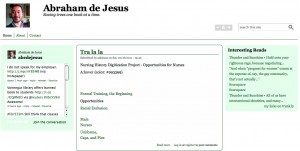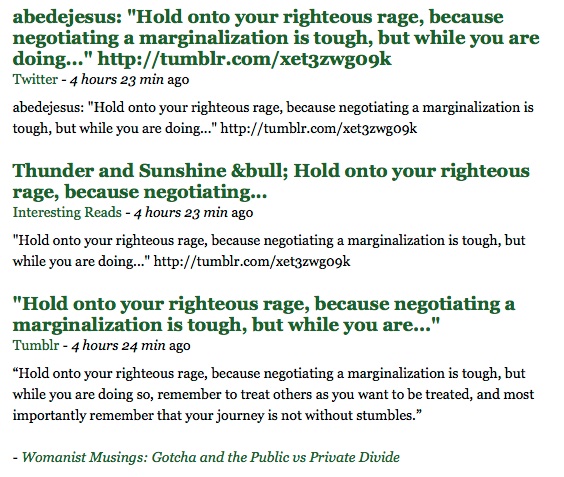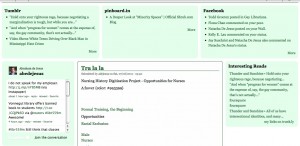Since everyone’s been talking about what Drupal can do, I thought I’d do a quick post showing how aggregation works on it. This was easy for me to set up because I’ve been building my personal site on Drupal for the past few months or so (not much spare time but I’m getting pretty happy with it). This is my current version:

Here is a more busy version with even more feeds aggregated into the front page (that centre area is for blog posts):
What I’m really liking is the ability to lifestream, the major reason why I’m interested in using Drupal. Lifestream is aggregating all of your created content into one chronological post (i.e., stream). In the next image look at how the three posts are from Tumblr, Twitter, and Trunk.ly:
 (although, amusingly, it is a little redundant since I currently use Tumblr to simultaneously publish to Facebook and Twitter and Trunk.ly sucks in those links…)
(although, amusingly, it is a little redundant since I currently use Tumblr to simultaneously publish to Facebook and Twitter and Trunk.ly sucks in those links…)

4 replies on “Drupal and aggregation”
Thanks Abe. I was wondering what Drupal was all about and I think I have a better idea now. Someday I am going to have the time to play with all the social media applications I find interesting/useful. I’ll add Drupal to the list. lifestreaming sounds good.
Drupal, essentially, is supposed to be a way to create and manage content on a website that allows the contributors to focus on managing content, and not the code of the site. That said, it only works like that if you don’t have to set it up!
In order to install Drupal, you need have Web server (e.g., Apache), Database server (e.g., MySQL), and PHP running on your computer. see http://drupal.org/requirements. Some ISPs provide free Drupal hosting for their clients.
True, but if you are using a Mac you can download MAMP to create a virtual server on your computer. If on a PC you download XAMPP. They function just like a server does and it allows you to create a development area for your website, just as I’ve done with mine. When I’m done building my site, I just have to migrate it to another server, which is not super difficult.